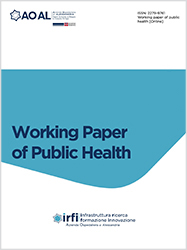Identification of culturable vaginal Lactobacillus species by means of MALDI-TOF MS: a proof-of-concept study

All claims expressed in this article are solely those of the authors and do not necessarily represent those of their affiliated organizations, or those of the publisher, the editors and the reviewers. Any product that may be evaluated in this article or claim that may be made by its manufacturer is not guaranteed or endorsed by the publisher.
Background: the study of vaginal microbiota is mainly performed by molecular methods. Nevertheless, they are expensive and not easily available in clinical microbiology laboratories. MALDI-TOF MS is being increasingly adopted for fast and accurate identification of pathogens from clinical samples. Aim of this study was to evaluate MALDI-TOF MS for identification of culturable bacterial species directly from plates streaked with vaginal swabs from a population of patients in childbearing age.
Methods: We included women of childbearing age evaluated from October 2020 to October 2021. Identification was performed by means of Vitek® MS system.
Results: A total of 381 patients were included in the study. Mean age was 33.3 years (±7.7) and 218/381 (57.2%) were pregnant. The most frequent isolates were: Lactobacillus crispatus 85/381 (22.3%), Lactobacillus acidophilus/gasseri 77/381 (20.2%) and Lactobacillus iners 64/381 (16.8%), identified with a confidence value of 99.9%. Gardnerella vaginalis was identified in 74/381 (19.4%) patients.
Conclusions: In this proof-of-concept study we found that MALDI-TOF MS has the potential to be used to identify main Lactobacillus species directly from plates streaked with vaginal swabs.
PAGEPress has chosen to apply the Creative Commons Attribution NonCommercial 4.0 International License (CC BY-NC 4.0) to all manuscripts to be published.

 https://doi.org/10.4081/wpph.2021.9461
https://doi.org/10.4081/wpph.2021.9461




